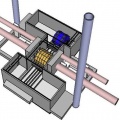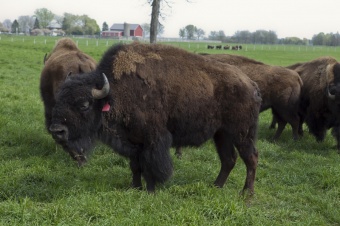Image of the week
|
|
Image: Cindy Arnold
Two new male bison, or bulls, were delivered to Fermilab earlier this month. New bulls are rotated into the Fermilab herd every few years. Read more about it in Fermilab Today. |
In the News
-
from Nature News Blog
18 April 2012
IceCube, an ice-bound telescope that looks for neutrinos rather than photons, has cast doubt on the long-held assumption that gamma-ray bursts are responsible for the highest-energy cosmic rays that rocket around the Universe.
-
from Nature
18 April 2012
Yet neutrino speed is still a prime focus for the MINOS physicists, who are carrying out their own high-precision measurement — not least because they did not do this when they saw hints of a faster-than-light neutrino in their own data some years ago.
-
from The Daily Yomiuri
16 April 2012
Meanwhile, Kyushu and Saga universities, along with the Fukuoka and Saga prefectural governments and others, are developing the idea of attracting a huge experimental facility and establishing an international research town to lure several thousand researchers to come and live from around the world. What they are trying to attract is the International Linear Collider.
-
from BBC News
13 April 2012
The Majorana fermion was first predicted 75 years ago – a particle that could be its own anti-particle. Now Dutch researchers, who have devised some exotic and minute circuitry to test for the Majorana’s existence, believe their results show the fermion to be real.
-
from Interactions
12 April 2012
An international team of researchers led by Masamune Oguri at Kavli IPMU and Naohisa Inada at Nara National College of Technology conduced an unprecedented survey of gravitationally lensed quasars, and used it to measure the expansion history of the universe. The result provides strong evidence that the expansion of the universe is accelerating.
-
from Physics World
12 April 2012
Two teams developing rival designs for an international linear collider will continue with their own separate blueprints – even though both teams are joining forces at the organizational level.
-
from symmetry breaking
11 April 2012
The world’s two most mature proposals for a collider complementary to the Large Hadron Collider are joining collaborative forces.
Copyright © 2025 ILC International Development Team




